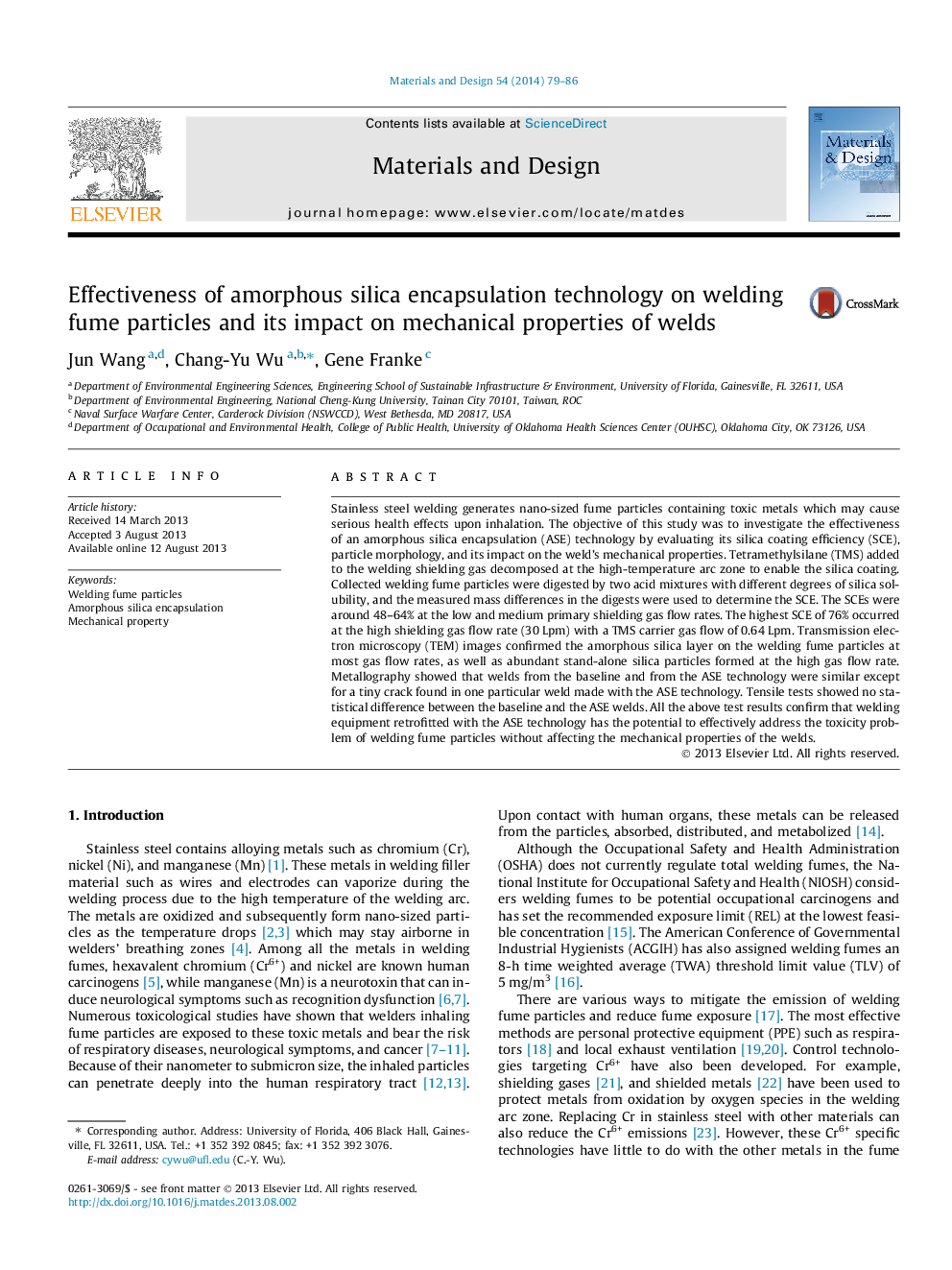| کد مقاله | کد نشریه | سال انتشار | مقاله انگلیسی | نسخه تمام متن |
|---|---|---|---|---|
| 829614 | 1470343 | 2014 | 8 صفحه PDF | دانلود رایگان |
• A novel welding shielding gas containing a silica precursor.
• Up to 76% of the welding fume particles encapsulated in an amorphous silica layer.
• No statistical difference between different types of welds in mechanical tests.
• Can potentially reduce the toxicity of welding fume particles.
Stainless steel welding generates nano-sized fume particles containing toxic metals which may cause serious health effects upon inhalation. The objective of this study was to investigate the effectiveness of an amorphous silica encapsulation (ASE) technology by evaluating its silica coating efficiency (SCE), particle morphology, and its impact on the weld’s mechanical properties. Tetramethylsilane (TMS) added to the welding shielding gas decomposed at the high-temperature arc zone to enable the silica coating. Collected welding fume particles were digested by two acid mixtures with different degrees of silica solubility, and the measured mass differences in the digests were used to determine the SCE. The SCEs were around 48–64% at the low and medium primary shielding gas flow rates. The highest SCE of 76% occurred at the high shielding gas flow rate (30 Lpm) with a TMS carrier gas flow of 0.64 Lpm. Transmission electron microscopy (TEM) images confirmed the amorphous silica layer on the welding fume particles at most gas flow rates, as well as abundant stand-alone silica particles formed at the high gas flow rate. Metallography showed that welds from the baseline and from the ASE technology were similar except for a tiny crack found in one particular weld made with the ASE technology. Tensile tests showed no statistical difference between the baseline and the ASE welds. All the above test results confirm that welding equipment retrofitted with the ASE technology has the potential to effectively address the toxicity problem of welding fume particles without affecting the mechanical properties of the welds.
Journal: Materials & Design (1980-2015) - Volume 54, February 2014, Pages 79–86
